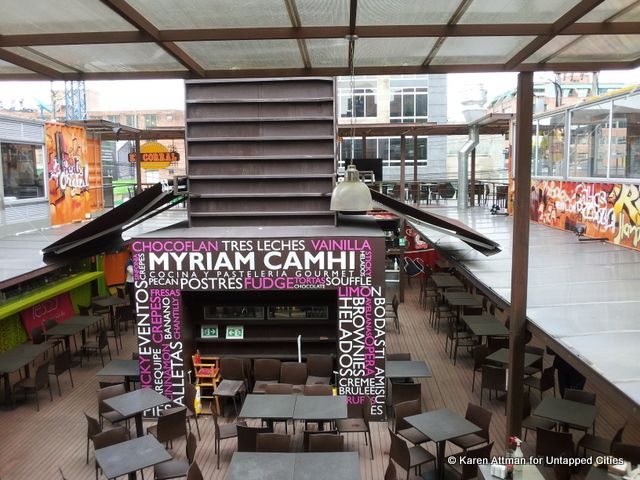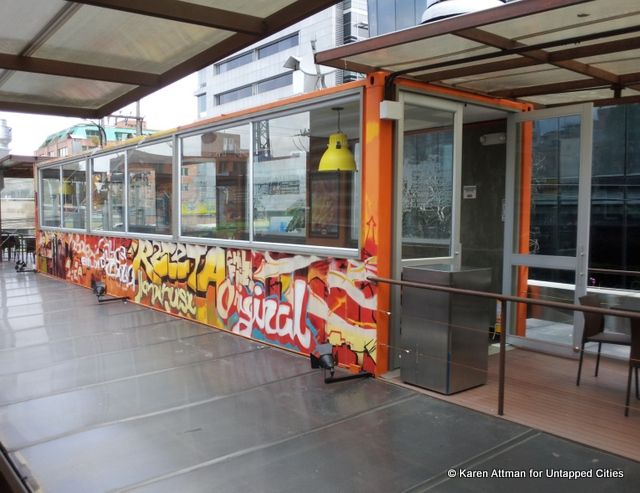A Salvaged Banksy Mural is Now on View in NYC
This unique Banksy mural goes up for auction on May 21st in NYC!


In recent years, shipping containers have been used for everything imaginable: homes, computer labs, studios, cafes, farms, parks and hotels. Bucking geographical boundaries, they’ve popped up all around the world, from New York City to Tokyo, Scotland to Costa Rica, South Africa to Germany, and all over the United States.
Colombia is also in on the trend. Container City opened to the public last year in one of the finest business neighborhoods of Bogota, Colombia. Twelve shipping containers, each one occupied by a gourmet restaurant, are set around an internal courtyard, with an additional external dining area on one side and at the back.

These shipping containers are not shy; sporting colors like fuchsia, lime green, baby blue, stoplight red and lollipop orange, they shout out irreverence. Add to that the graffiti on the inside and outside walls, and the result is casual yet classy and a break from the norm in this conservative area.
Yes, it is a food court but it’s got plenty of personality. We sat down with the architect, Alejandro Barreneche, to talk about the project, some of the challenges faced, and the construction process.
The concept of Container City was to create a super eco-friendly space in Bogota, combining materials that are recycled or can be, with some interesting design twists along the way. For instance, the floors are made from residue left over from coffee production. Yes, 100% Colombian coffee…floors.
The design also takes into account the year-round good weather in Bogota by combining open-air dining with a roofed area in the internal courtyard, allowing natural light to flood in and minimizing the need for artificial lighting.

Space is optimized at Container City; the 948 meter, multi-level area gives the impression that it’s bigger than it really is. Typically an area this size would hold only three restaurants, but twelve fit in here. The layout allows for the easy circulation of people and plenty of open space.
The center of activity is a 12-foot shipping container, a tower of corrugated iron dressed in stately brown. The interesting thing is that it is standing on one end.
Alejandro pointed out that although they’ve stood a container on end in Paris before but it had an external support. The one in Container City has no external support. A Colombian architect specializing in bridge construction helped design the internal structure whose base moves on springs. So don’t worry, it won’t come down any time soon; it’s even earthquake resistant.
In 2010 the project began. 14 months were spent obtaining the necessary permits, and in four months they laid the foundation. Three months later it was finished, with a total of 73 construction days. Occupation was 100% right from the beginning.

Recycling is just starting to get attention in Bogota, so the fact that Container City is occupied mainly by gourmet restaurants helps the community value the recycled/recyclable concept. Hip and artsy, Container City certainly gets people thinking outside the box (or shipping container).
Read also about 6 innovative shipping container uses in New York City
Karen Attman is a journalist from the United States now living in Bogota, Colombia and writing about food, travel and things that amaze her about that dynamic South American city. Her work has been published in magazines, newspapers and online publications in the United States, Europe and South America. She blogs at Flavors of Bogota.
Subscribe to our newsletter